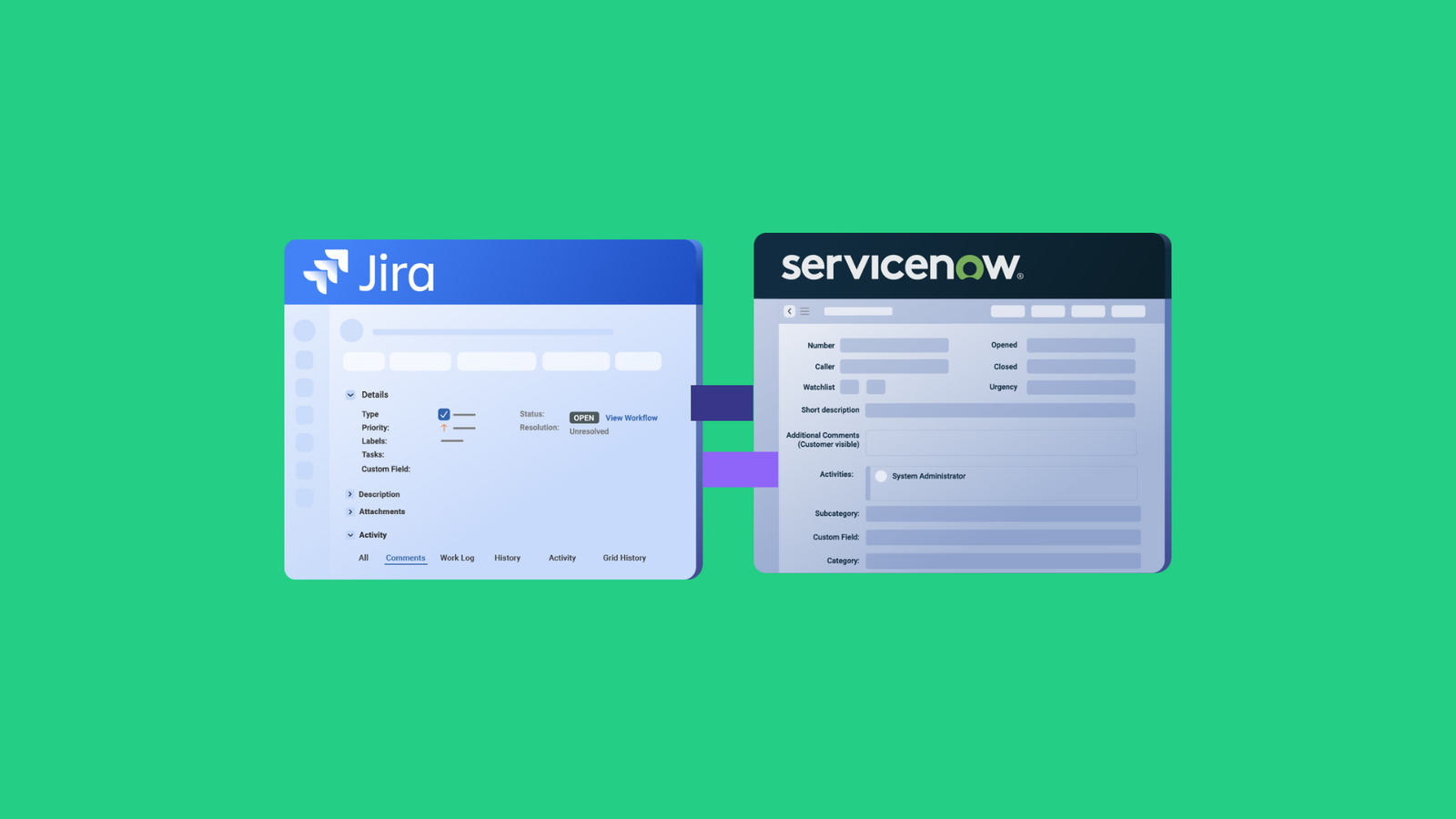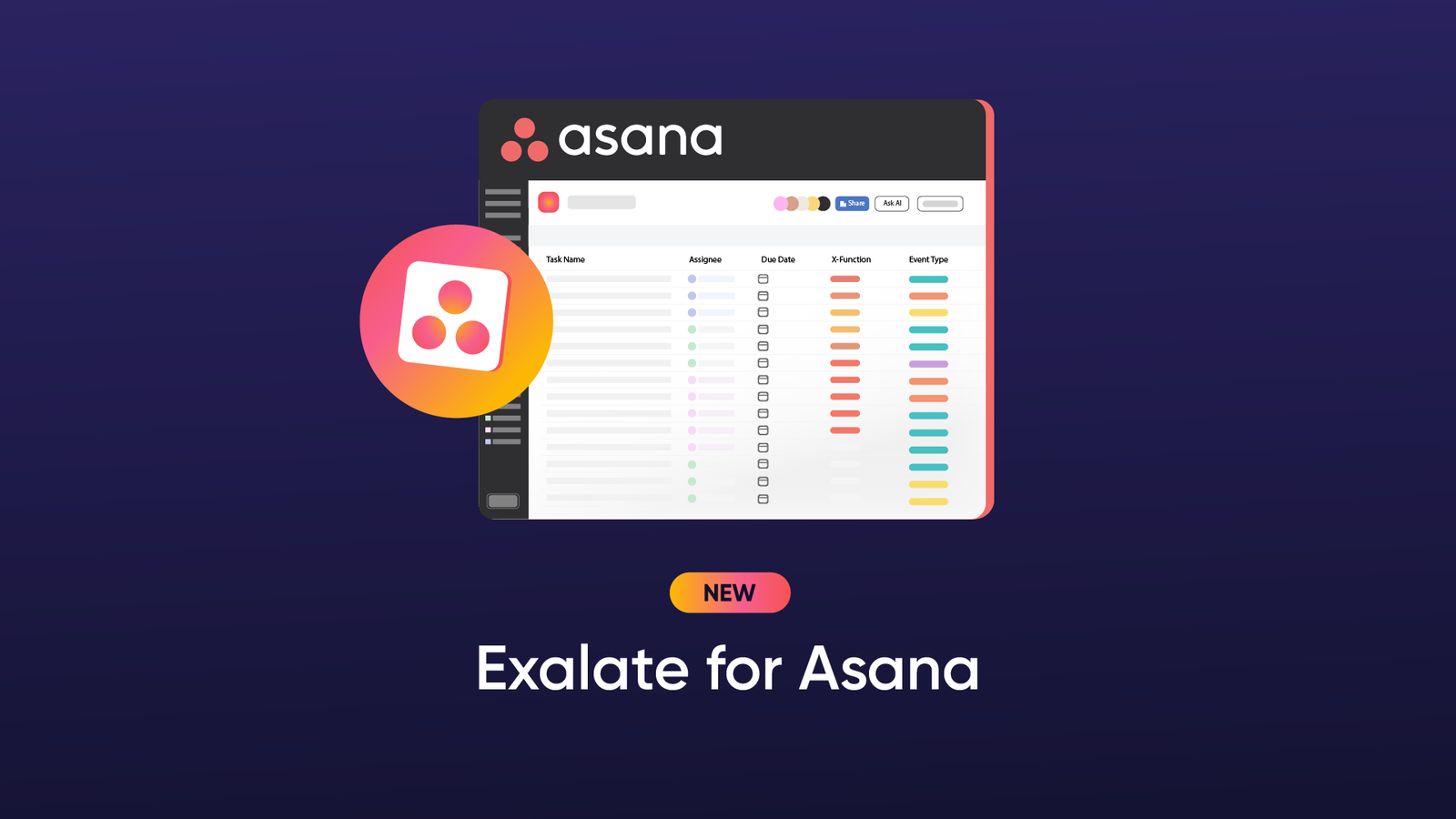Organizations looking to automate processes and integrate Salesforce with other systems often choose MuleSoft as the go-to option.
Using this platform for integration gives your company or business access to the entire array of Salesforce products, including Lightning, Customer 360, and others. You also gain access to an API management platform.
Despite MuleSoft’s broad application, it might not have the exact features needed for your integration use case. In that case, you must look for MuleSoft competitors and alternatives.
Before we list the best MuleSoft alternatives, let’s discuss what the platform has to offer and where it falls short.
What is MuleSoft?
MuleSoft is a platform that allows organizations to automate processes, manage APIs, integrate data, and connect with third-party systems.
When it comes to integration, the MuleSoft Anypoint Platform is the standout product for on-premise and cloud-based connections. This platform provides features like Connectors, DataGraph, Flex Gateway, DataWeave, and Exchange. It also supports API governance, monitoring, and management.
The main advantage of MuleSoft is that it is compatible with multiple platform connectors via a no-code or low-code setup. It also works well for API management and security.
What Features Does MuleSoft Have?
Apart from Anypoint Platform, MuleSoft also offers the following features and products:
- MuleSoft Composer helps users connect apps and data using templates, custom expressions, pre-built connections, and invocable actions.
- MuleSoft RPA relies on robotic process automation (RPA) to make internal and external processes more efficient.
- MuleSoft IDP uses intelligent document processing (IDP) to extract and import information from documents automatically.
- Dataloader.io allows users to import, delete, arrange, and load data from multiple sources.
- MuleSoft AI relies on machine learning and artificial intelligence to improve the accuracy of automated tasks.
- API Manager prevents API sprawl by establishing a coherent system for managing APIs.
What Are the Limitations of MuleSoft?
While large corporations can afford MuleSoft, small businesses will struggle to pay for any of the subscription plans.
Besides, MuleSoft’s learning curve is steep, which means you need experts familiar with the platform to set things up.
If you want only an integration solution, you end up paying for extra MuleSoft features that your business doesn’t need.
To address these limitations, let’s review the most fitting MuleSoft Anypoint alternatives.
Boomi
Boomi is a solution that provides an integration platform as a service (iPaaS) for connecting business processes with applications, systems, and cloud services.

It provides a centralized hub for managing and configuring applications and using ready-made connectors and custom scripts.
Boomi Features
- ETL (Extract, Transform, Load)
- API management
- B2B/EDI management
- Master Data Hub for a 360-view of your data
- Event Streams for scalable, high-performance use cases.
Boomi Pricing
You can start a free trial for Boomi before choosing one of these pricing plans:
- Professional
- Pro Plus
- Enterprise
- Enterprise Plus
The exact cost for your integration use case is available upon request.
Boomi Pros
- Supports multiple integrations
- Works well for templated integrations
- Handles data integration both in real-time and in batches.
Boomi Cons
- Not completely no-code
- Performance issues when working with multiple connections
- Complicated user interface
Exalate
Exalate is a bidirectional integration tool that allows teams to connect and sync data with other internal and external teams.

Businesses and organizations can use Exalate’s integration as a service (IaaS) offering to connect with MSPs. The alternative is the integration for solution providers option.
Exalate Features
- No-code Basic mode for simple connections
- Groovy-based scripting engine
- AI-assisted integration is available for free to all Script mode users.
- Custom granular triggers
- Bulk operations
- Robust queuing mechanism
- Aida, an AI-powered assistant
- Monitoring dashboard for tracking active and inactive connections on your node.
You can check out the Exalate Trust Center for more information about security, or just read about it in the Exalate Security Whitepaper.
Exalate Pricing
Exalate supports a 30-day free trial, after which you can get the Free, Professional, or Enterprise plan. You can choose your system on its integrations page and proceed from there.
The Professional plan for Exalate’s Jira app starts at $6 per month for each system, while the other connectors for ServiceNow, Azure DevOps, Freshdesk, etc., start at $389 per month. To find out about the cost of the Enterprise plan, read more about Exalate pricing on our website.
For precise quotes and a quick demo, reach out to the sales team.
Exalate Pros
- The support is excellent.
- The AI assistant helps with integration challenges.
- It supports seamless real-time synchronization.
- Each side has autonomous, granular control over its data flow.
Exalate Cons
- Requires deep scripting for some integrations.
- Lack of detailed error messages.
- No centralized dashboard for usage monitoring.
Workato
Workato is an integration solution that uses recipes — a set of pre-made instructions — to control how systems interact with each other.
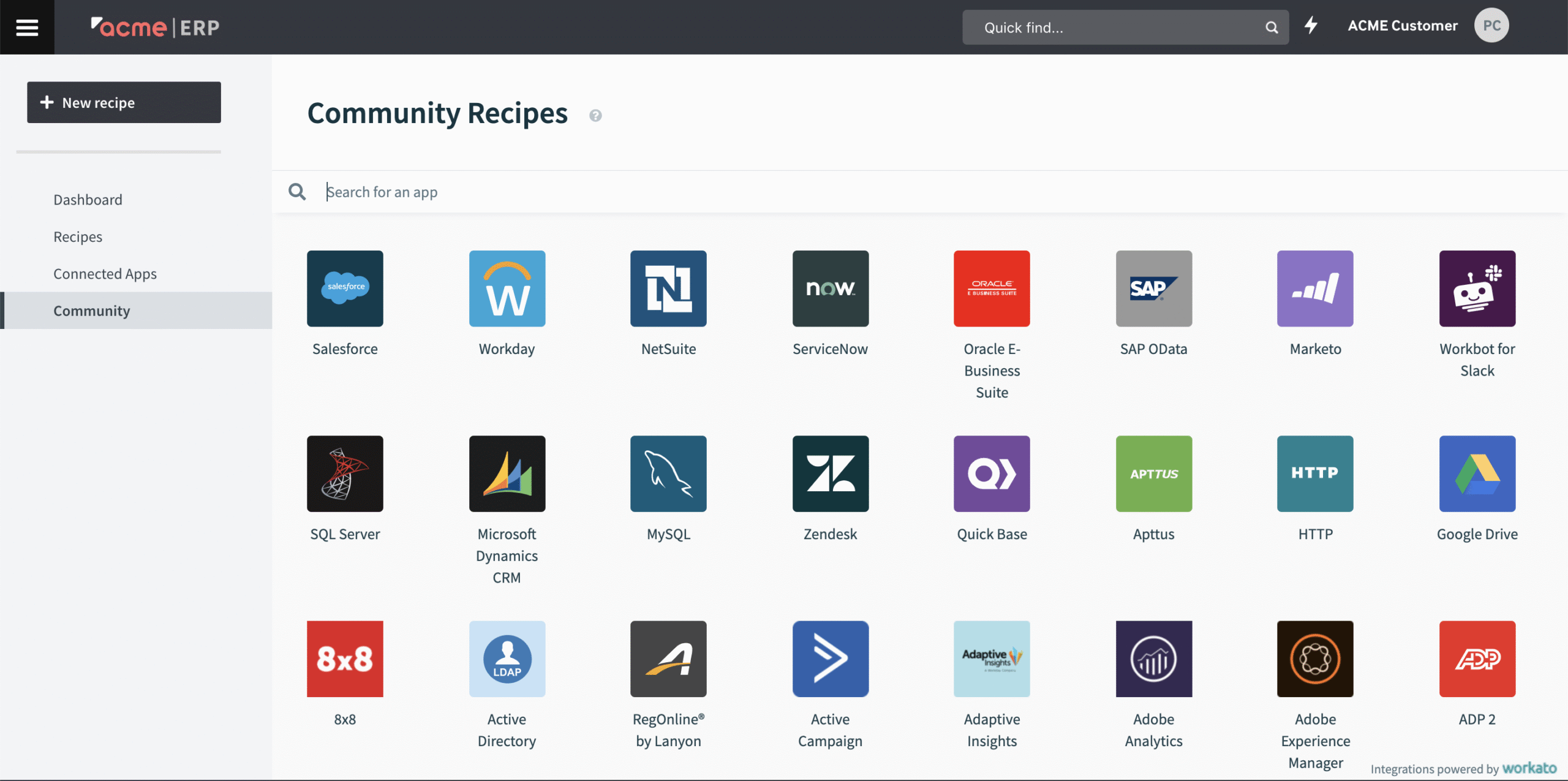
IT teams can use Workato to govern and secure APIs as well as integrate data between teams and organizations.
Workato Features
- Triggers for prompting an action to occur automatically.
- Actions containing multiple steps and conditions for every connector.
- API Platform for building, running, and managing APIs in one place.
- Workflow Apps for creating custom workflows between teams using a drag-and-drop editor.
Workato Pricing
Workato uses a pay-per-use pricing model. To find out the exact costs, contact the sales team.
Workato Pros
- It has an intuitive user interface
- The documentation is detailed and organized
- Contains a massive library of connectors
- Recipes can handle simple and complex syncs
Workato Cons
- Simple recipes often require complex logic
- Setting up recipes and triggers can be daunting for first-time users.
Jitterbit Harmony
Jitterbit offers a suite of tools for building and integrating APIs. Its iPaaS solution, Jitterbit Harmony, is an alternative to MuleSoft.
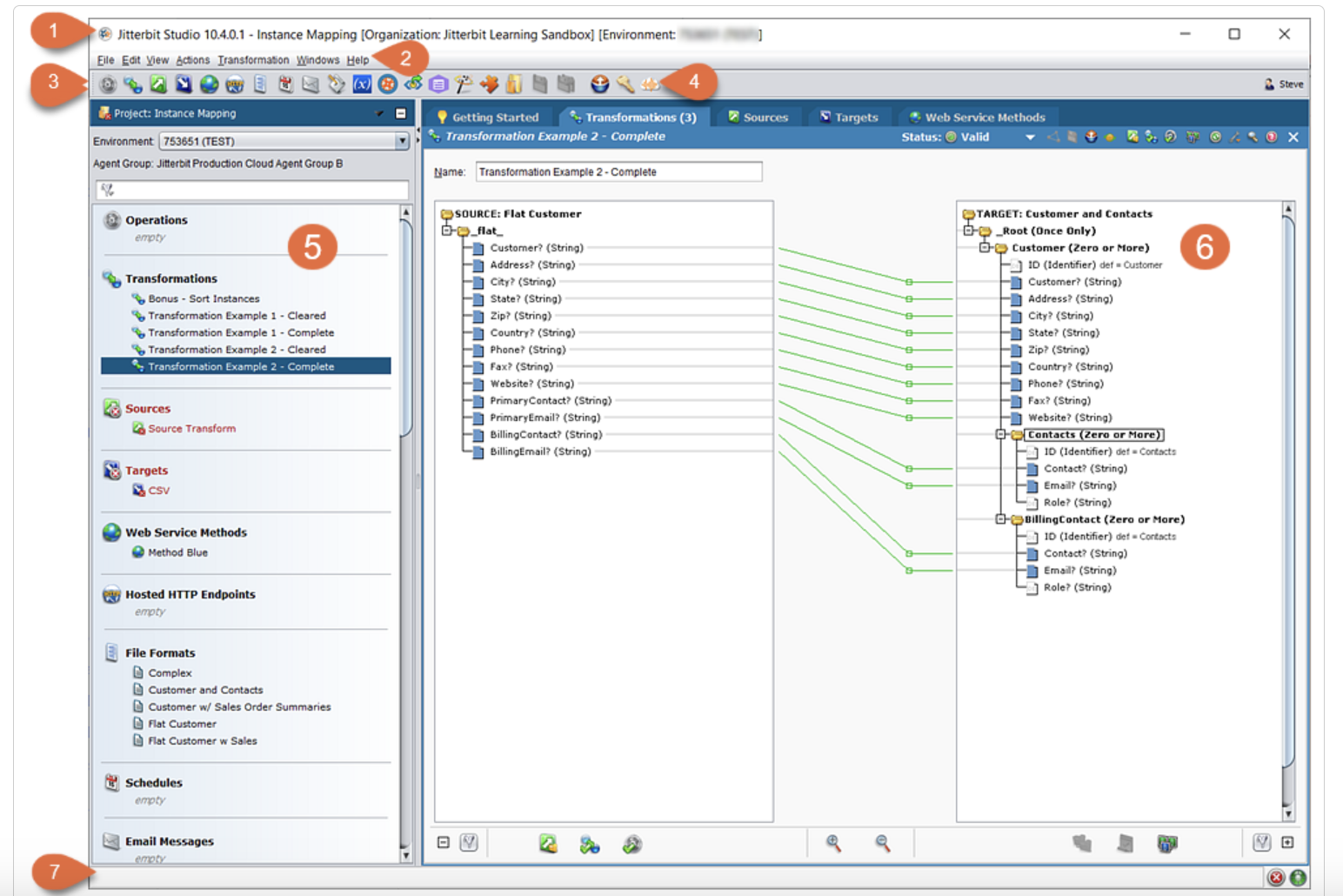
Jitterbit Harmony is a low-code integration platform that allows users to connect systems, automate workflows, and build applications.
Jitterbit Harmony Features
- Data Loader for importing and exporting data between Salesforce and other systems.
- Message Queue Service for storing and clearing messages in queues.
- Management Console for controlling and monitoring your APIs and integrations in one place.
- Cloud Studio for creating workflows using a drag-and-drop interface.
- API Manager for publishing, managing, analyzing, and securing APIs.
Jitterbit Harmony Pricing
Jitterbit offers custom pricing options: Standard, Professional, and Enterprise. You can get a quote by contacting their sales team.
Jitterbit Harmony Pros
- Has several pre-built connectors
- The interface is easy to use.
Jitterbit Harmony Cons
- Error messages are unclear
- The learning curve is steep
Informatica
Informatica is an AI-powered, cloud-based data management platform that automates workflows and business processes.

The Informatica Intelligent Data Management Cloud (IDMC) helps businesses consolidate fragmented data end-to-end.
Informatica Features
- Data catalog for scanning metadata
- API integration for connecting applications and workflows
- Data marketplace, a cloud-native solution for AI data sharing
- Master data management (MDM) for a 360-degree view of business data.
- CLAIRE is an AI co-pilot for unifying metadata intelligence.
Informatica Pricing
The pricing is available by getting a quote for your Informatica Processing Unit on demand.
Informatica Pros
- Uses AI to improve syncs
- Tailored pricing for businesses of all sizes
- Connects with several on-premise and cloud-based applications.
Informatica Cons
- Expensive to purchase.
- Complex to set up and maintain
- Reduced performance with increasing workloads
Zapier
Zapier is a reliable MuleSoft alternative because it allows users to automate workflows and connect systems to interact with and share data between 6,000+ apps.
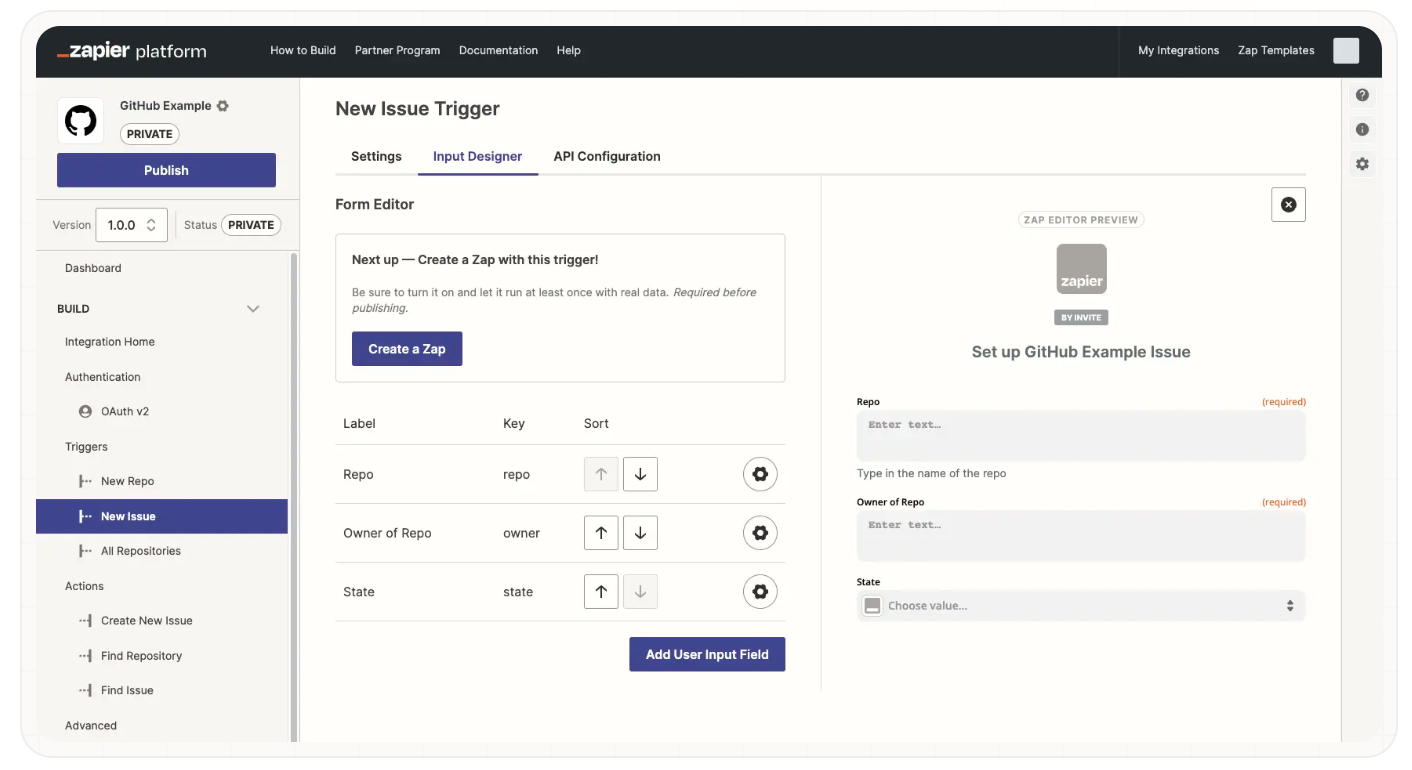
Zapier Features
- Zaps for automating workflows
- Tables or databases
- Interfaces (custom pages)
- Canvas for mapping workflows using AI
- Chatbots for answering customer questions
- Central for building chatbots.
Zapier Pricing
- Free
- Starter starts from $29.99 per month ($19.99 per month paid annually)
- Professional starts from $73.50 per month ($49 per month paid annually)
- Team starts from $103.50 per month ($69 per month paid annually)
- Company (available on-demand)
Zapier Pros
- Easy to configure and use
- Contains thousands of third-party integrations
- Excellent customer service
Zapier Cons
- Limited customizability
- Needs constant monitoring and maintenance.
- More expensive than other alternatives to MuleSoft.
Cleo Integration Cloud
Cleo Integration Cloud is a platform that allows users to automate API and EDI integrations into any application for better visibility.

It uses a no-code solution to provide standard connectors for syncing data between applications, servers, databases, etc.
Cleo Integration Cloud Features
- EDI and API integration
- Managed file transfer (MFT)
- B2B Gateway
- Pre-built integrations
Cleo Integration Cloud Pricing
Contact the sales team to get the pricing for Cleo Integration Cloud.
Cleo Integration Cloud Pros
- User-friendly interface
- No-code integration support
- Detailed monitoring and tracking data.
Cleo Integration Cloud Cons
- Has a steep learning curve
- Difficult to customize
- Struggles with high-volume transactions
SnapLogic
SnapLogic is a platform that allows you to integrate, automate, and orchestrate the flow of data and applications across your organization.

Users can configure this platform for data and application integration as well as for developing and managing APIs.
SnapLogic Features
- ‘Snaps’ (prebuilt connectors) for no-code integration.
- AutoSync for pre-packaged pipelines needed for instant data transfer
- GenAI Builder for creating LLM-powered applications.
- SnapGPT for translating intent into real-life integrations.
- API Management (APIM) for designing and managing APIs.
SnapLogic Pricing
Information from the SnapLogic blog shows that users can get Premium Snaps or Core Snaps.
Premium Snaps have two tiers with a starting price of $9995.00 per year:
- Tier One (+$45k)
- Tier Two (+$15k)
For exact pricing, contact the sales team with your use case.
SnapLogic Pros
- Supports no-code integrations
- Compatible with numerous platforms
- Supports legacy system integration
- Automates data flow using simple logic
SnapLogic Cons
- Requires writing scripts and integration logic
- Doesn’t support automated unit testing
- Needs better customer support
- Doesn’t support auto-retry for failed jobs.
Tray.io
Tray is a unified AI-powered iPaaS solution that automates business processes and connects with your systems on the cloud or on-premise.

You can build API integration from scratch or use the vast library of custom connectors to sync data between platforms.
Tray.io Features
- Tray Build uses a low-code workflow editor to set up a sync
- Tray Code uses scripts to interact with different APIs.
- Tray Chat uses AI to provide on-demand assistance.
- Merlin AI transforms LLM outputs into business processes.
Tray.io Pricing
Tray.io is available for the Pro, Team, and Enterprise plans. Tray support services are also split into two tiers: Tray Advantage and Tray Advantage Plus.
To get the quote for your business, contact the sales team.
Tray.io Pros
- The interface is user-friendly
- Makes process automation easy
- Allows advanced scripting
- Has a rich library of resources
Tray.io Cons
- Lacks a vibrant community
- Difficult to learn
Make
Make (formerly Integromat) is an integration solution that allows you to automate and connect applications, databases, web services, chatbots, and other systems.

It relies on automated workflows (scenarios) and event triggers to initiate and control data transfer between platforms.
Make Features
- Integration with popular web services and systems
- Visual workflow editor for no-code scenario configuration
- Data management and integration
- 2FA and company-wide SSO
Make Pricing
- Free (1000 ops per month)
- Core (10,000 ops at $10.59/month or $9/month billed annually)
- Pro (10,000 ops at $18.82/month or $16/month billed annually)
- Teams (10,000 ops at $34.12/month or $29/month billed annually)
- Enterprise (available on demand)
Make Pros
- Easy to use
- Intuitive drag-and-drop interface
- Can handle complex tasks
- Cheaper than MuleSoft.
Make Cons
- Errors are difficult to handle
- Has a steep learning curve
- Has subpar documentation
- Difficult to configure
Exalate: An Excellent MuleSoft Alternative
If you have a Salesforce integration use case with other platforms, Exalate is one of the best MuleSoft ESB alternatives available.
With Exalate’s IaaS option, you can explore several possibilities, from Salesforce integrations with other systems to Salesforce to Salesforce connections. MSPs can also use Exalate to improve collaboration with clients.
Exalate also supports bidirectional integration between platforms such as Jira, Salesforce, ServiceNow, Zendesk, Azure DevOps, GitHub, and many others.
To find out more about Exalate’s robust integration tool, book a demo with our engineers right away.
Recommended Reading:
- Integration Showdown: Unito App vs. Exalate – Which Tool is Right for You?
- The Best ConnectALL Alternatives For Business Integration
- Exalate Comparisons with Other Solutions
- 10 Most Valuable Integrationhub Alternatives Right Now
- Exalate or Getint: An Objective Comparison to Help You Choose the Best Integration Solution


